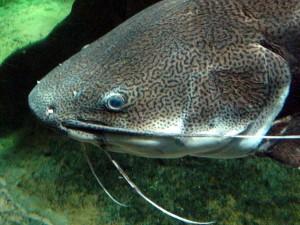Pesticides found in catfish exceed the permissible limit
A study published in the scientific journal Chemosphere has detected high levels of organochlorine pesticides in the muscle tissue of sharptooth catfish living in freshwater impoundments in South Africa. Furthermore they found that eating them may pose a significant health risk to surrounding populations who utilize use as a food source. Scientists collected 20 catfish each from three different freshwater impoundments in South Africa. The fish were tested for organochlorine pesticides including DDT, aldrin, dieldrin, endrin, endrin aldehyde, endrin ketone, endosulfan I, endosulfan II, heptachlor, heptachlor epoxide, alpha-, beta-, gamma- and delta-isomers of hexachlorocyclohexane and methoxychlor. Overall human health and cancer risks through consumption were assessed using U.S. EPA risk assessment methodologies The results found that fish collected from all three water sources were contaminated with various combinations of organophosphate pesticides. Fish from two of the impoundments contained levels of the pesticide dieldrin at concentrations high enough to result in cancer and health risks above what is considered acceptable.



